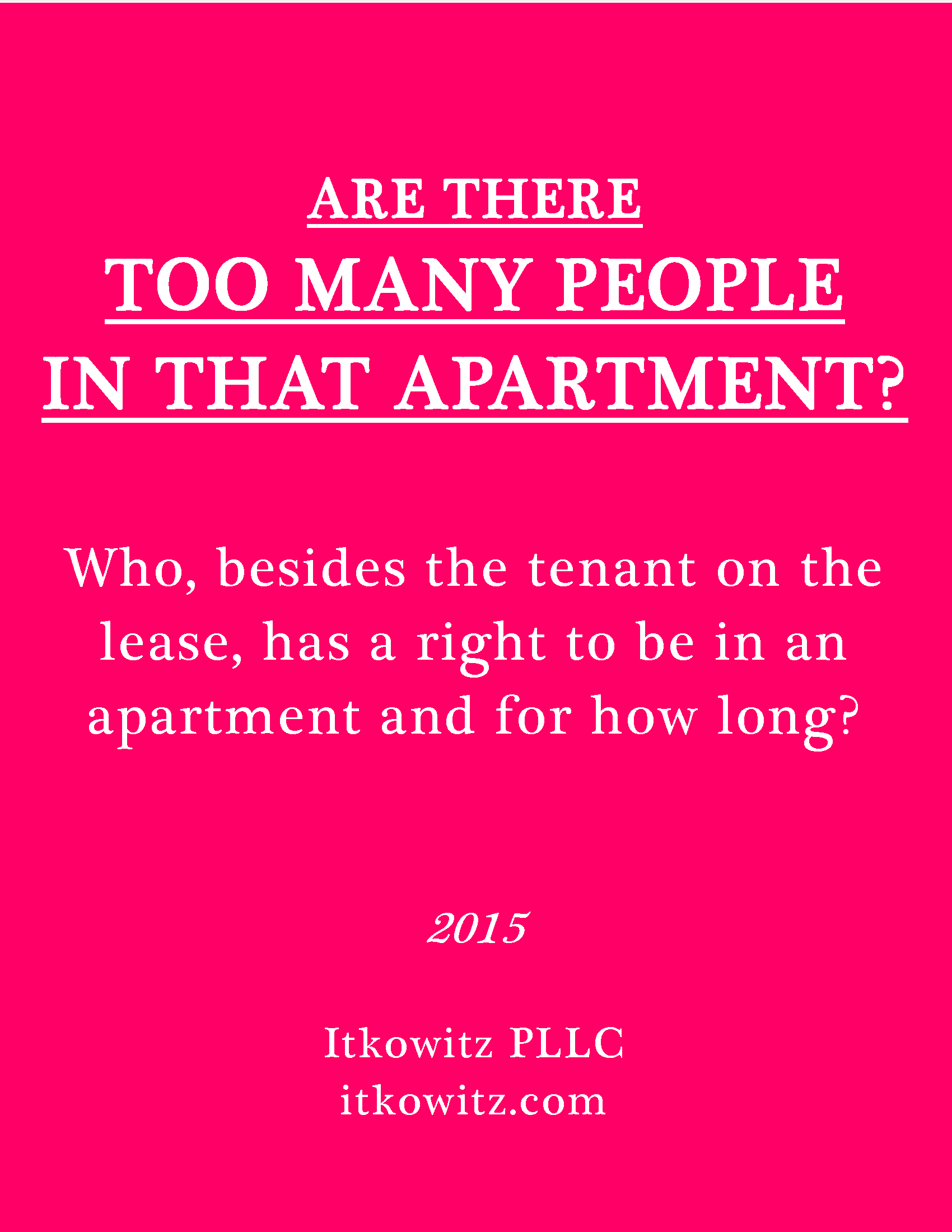THERE ARE TOO MANY PEOPLE IN THAT APARTMENT — Materials prepared for two LIVE “L & Tea Time with Michelle” episodes
Michelle created the below booklet for the Symposium entitled — THERE ARE TOO MANY PEOPLE IN THAT APARTMENT! — Who, besides the tenant on the lease, has a right to be in an apartment and for how long? — that covers the laws regarding: roommates; subletting; short term leasing (i.e. the law that affects Airbnb, Couchsurfing, etc.); having a business in an apartment; and occupancy limits.
You can read the booklet. here is a link tot he PDF.
 |
| Michelle Moderating Live L & Tea Time |
I. INTRODUCTION
I answer many questions on landlord and tenant law in New York City. Many of those questions can be grouped together under a broad category that I call –WHO, BESIDES THE TENANT ON THE LEASE, HAS A RIGHT TO BE IN AN APARTMENT AND FOR HOW LONG? This booklet attempts to answer that question by explaining the various areas of real estate law that shape the answer, including the laws regarding: roommates; subletting; short term leasing (i.e. the law that affects Airbnb, Couchsurfing, and many other short-term leasing platforms); having a business in an apartment; and occupancy limits.
II. ROOMMATES AND FAMILY MEMBERS
Under New York Real Property Law § 235(f), often referred to as the “Roommate Law”, a residential lease entered into by one tenant implicitly permits that tenant to share the apartment with either his/her immediate family or unrelated persons. This is true even if a residential lease says otherwise.
If a landlord violates the Roommate Law, a tenant may seek an injunction to enjoin and restrain such unlawful practice and, the tenant can recover actual money damages sustained as a result of such unlawful practice, including tenant’s court costs and, depending on the lease, attorney fees.
A. A Lease for One Tenant
A landlord may not restrict occupancy of an apartment to a tenant or even to such tenant and his or her immediate family. Any such restriction in a lease is unenforceable as against public policy. The court will simply ignore it.
Any residential lease entered into by one tenant shall be construed to permit occupancy by:
• the tenant
• immediate family of the tenant
• one additional occupant, and
• dependent children of the occupant
An example of how this could work is as follows.
EXAMPLE # 1 – ONE TENANT ON THE LEASE
Landlord rents to Mr. Smith, the tenant. Mr. Smith moves his immediate family in, Mrs. Smith and their two children. Then Mr. and Mrs. Smith decide that they need a roommate in order to make ends meet. This is not so crazy – see the recent New York Times piece on married couples getting a roommate. So Mr. and Mrs. Smith get Mr. Jones as a roommate. Mr. Jones has two dependent children. Now you have three adults and four children living in an apartment, even though there is only one tenant on the lease.






